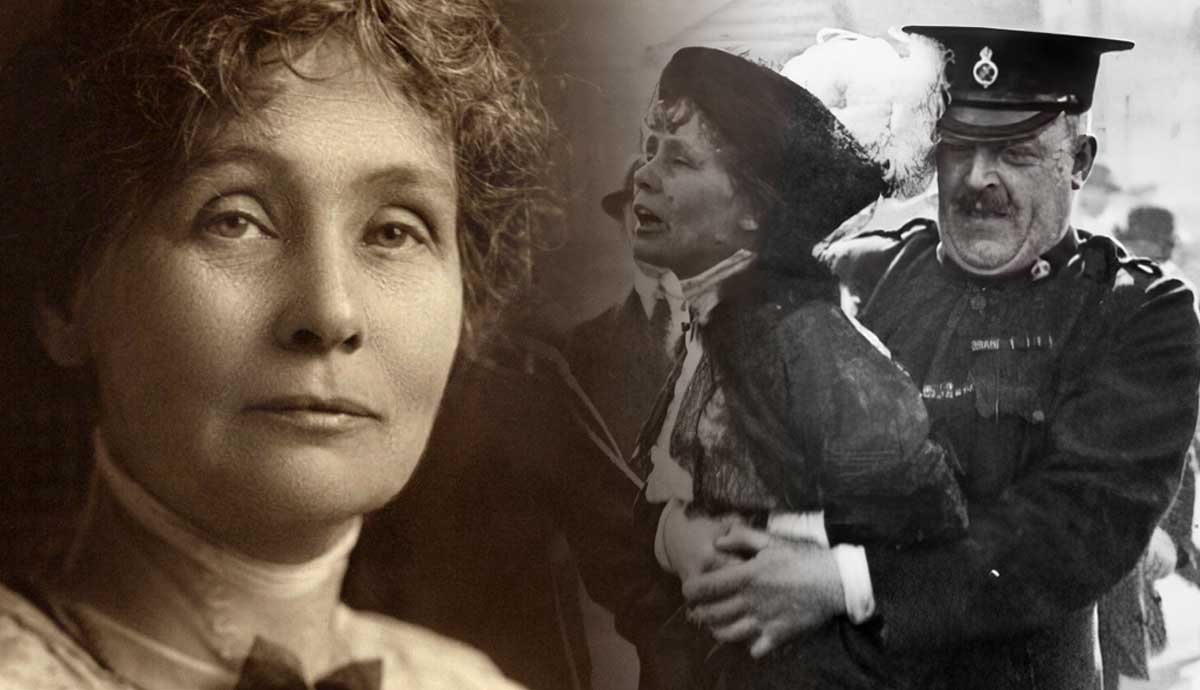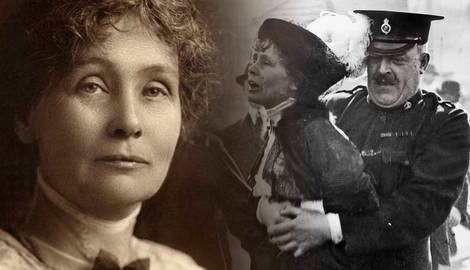
Emmeline Pankhurst was one of the most significant voices of the early 20th century. Through her pioneering work as leader of the Suffragettes, she secured the right for women to vote. Her hair-raising protests, including window smashing, hunger strikes and arson, drew widespread attention to their cause, even if it resulted in frequent imprisonment. Finally, in 1918, Prime Minister David Lloyd George passed a law allowing married women over 30 the right to vote. The battle wasn’t over yet, but thanks to the fearless campaigns led by Pankhurst and the Suffragettes, society moved one giant step closer to equal rights. We celebrate one of the world’s most pioneering freedom fighters with a series of fascinating facts about her life.
1. Emmeline Pankhurst Founded the Women’s Social and Political Union (WSPU)

Emmeline Pankhurst played an instrumental role in politics from early in her adult life. She founded the Women’s Franchise League in 1889, an organization set up to fight for married women’s right to vote in local elections, and supported women’s equality in relation to divorce and inheritance. In 1903, Pankhurst then went on to help set up the more politically militant Women’s Social and Political Union (WSPU), whose members became known as the ‘suffragettes.’ Together, the group staged a series of shocking protests aimed at garnering as much focus as possible to their cause.
The British public watched on as women threw rocks through windows, set letterboxes on fire, chained themselves to railings and destroyed works of art, arguing this was the only way to make the British Government wake up to their blatant inequality. Tragically, in 1913, WSPU Member Emily Davidson was killed after jumping in front of the king’s horse at the derby.
2. Her Husband Was Also a Supporter of Women’s Rights

Emmeline’s husband Richard Pankhurst, who she married in 1879, was a keen supporter of women’s rights, and did much to support the cause being fought by Emmeline, her contemporaries, and later their daughters. He wrote the Married Women’s Property Acts of 1870 and 1882, which gave women the rights to keep earnings and property from before and after marriage.
3. Emmeline Pankhurst Was Arrested Many Times

Perhaps unsurprisingly, Pankhurst and her fellow Suffragettes were frequently arrested and forced to spend periods of time in prison. While in prison, she and her fellow Suffragettes went on hunger strike. This in turn led to violent force-feeding. As a reaction to the hunger strikes stages by the Suffragettes, the British government set up the ‘Cat and Mouse’ Act, for which prisoners known for refusing to eat would be regularly released and rearrested once they had regained their health. This cruel process led Pankhurst to be arrested and released 12 times within a year. She was also arrested on three separate occasions for breach of the peace.
4. Her Daughters Were Active Suffragettes

Emmeline Pankhurst’s daughters Christabel, Sylvia and Adela were also committed members of the WSPU and active participants in the Suffragettes’ cause. Christabel worked closely alongside her mother from the early days of the WSPU, and became one of the group’s most outspoken voices. In 1914, Sylvia formed the socialist group named the East London Federation of Suffragettes (ELFS), which allowed her to continue the fight for equality.
5. She Played an Important Role During World War I

Pankhurst and the Suffragettes agreed with the government to call off the Suffrage campaign during World War I, and the government subsequently released group members who had been imprisoned. Instead, Pankhurst concentrated on encouraging women into work during the war while men were fighting on the battlefield. She argued that this was one of the most effective ways for women to prove they were equally as capable as men.










